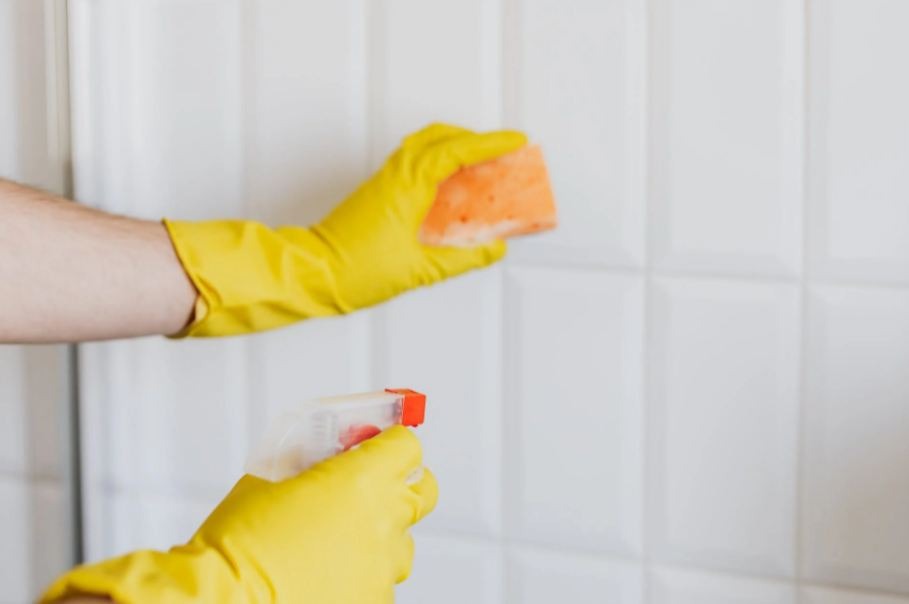Soap scum, also known as multifarious sludge or lime soap, is one of the many annoying sedentary messes you can see sitting on your tiling, shower, tubs, sink, or bathroom fixtures. This off-white, often yellowish, flaking residue is a dried substance formed by the reaction of salts and minerals found in the mixture of hard water and soap you use. What makes it more unpleasant is that it causes odor, scaling on, and discoloration of surfaces.
This article will teach you what causes the accumulation of soap scum and how to prevent it from messing up with the cleanliness of your house. So read on!
Cause of soap scum build-up
How exactly does a soap scum form? Hard water contains calcium and magnesium ions that react with the sodium cations found in soap to produce calcium stearate and magnesium stearate – the primary components of that filmy yuck you see on surfaces that ought to be spotless. What makes soap scum more disgusting is that it can include body oils, dead skin cells, and other dirt!
When ignored and left unwiped for too long, soap scum can be tough to remove as it can further combine with mold and mildew and harden like a concrete material. You must prevent soap scum must from building up as it can destroy glass and metal fixtures. It is, therefore, necessary that you know how to remove this unpleasant mess to save you money, time, and effort in the long run.
How to remove soap cum
There are many ways – or at least many solutions – to remove soap scum, depending on which surface it sits on. The most commonly used soap scum removers are acidic substances such as baking soda, lemon oil, and vinegar. These substances are effective because they are capable of breaking down soap scum. In all the tested and proven ways, one solution seems to be the cheapest and most convenient – vinegar! This solution can wipe out soap scum on your surfaces, and the how-tos are provided below.
Cleaning Shower Walls
Wiping out soap scum in your shower walls can be done using vinegar and water. To do this, create a mixture of 1 cup of vinegar and 1 cup of water in a clean bottle spray. Shake this mixture. A tablespoon of dish soap may also be added to the vinegar-water mix for a more intense cleaning effect, especially on challenging areas.
Spray the mixture on the soap scum found on your tiling, shower walls and bathroom fixtures. Wait at least 20 minutes to let the mixture sit, then scrub the area with a sponge. Use a circular motion for this step for deeper cleaning. Repeat this process until the soap scum is eliminated.
Removing Soap Scum from Sink
The sink is more challenging to clean than shower walls because of its irregular shape, so a better solution is needed to wipe out soap scum on this surface. To clean this particular area, add 1 cup of baking soda to 1/4 cup of vinegar in a mixing bowl. Let the mixture form a scrubbing paste.
Use a sponge to apply the mixture to the soap scum and let it sit for at least 20 minutes. Then, using a brush, scrub the area in a circular motion and repeat the process until the sink is thoroughly cleaned.
Dealing with Years-Old Soap Scum
Removing soap scum built up for many years can be extra challenging because vinegar alone cannot solve the issue. It would help if you had a more robust solution for this daunting task. You can use hydrogen peroxide as the best alternative for vinegar as it possesses the latter’s cleaning power with an added bleaching effect.
In a mixing bowl, mix 1 cup of hydrogen peroxide and 2 cups of baking soda. Use a clean cloth to apply this mixture to the soap scum and leave it at least an hour. Add water to the area and use a brush to scrub it in a circular motion. You may apply baking soda to the brush before using it in the most challenging areas. Keep on repeating the process until the soap scum is completely eliminated.
Ways to Prevent Soap Scum Build Up
Preventive measures for soap scup include cleaning your sink, tiling, and bathroom regularly and washing your shower curtains at least once a week. You can also use commercial soap specially formulated to remove soap scum. It has been proven that the more minerals found in hard water, the more likely soap scum will build up. To prevent soap scum from forming to an unpleasant extent, you may opt to use a water softener or use liquid soap instead of bar soap.
Conclusion
Soap scum is a disgusting residue that builds up when minerals in soap and water combine and is left unwiped for some time. It will always be a part of your household cleaning struggles unless you stop using the sink or remove soap from your daily bathroom routine. Since you probably cannot afford to do that, you should remember the ways elaborated above to remove and prevent soap scum.
